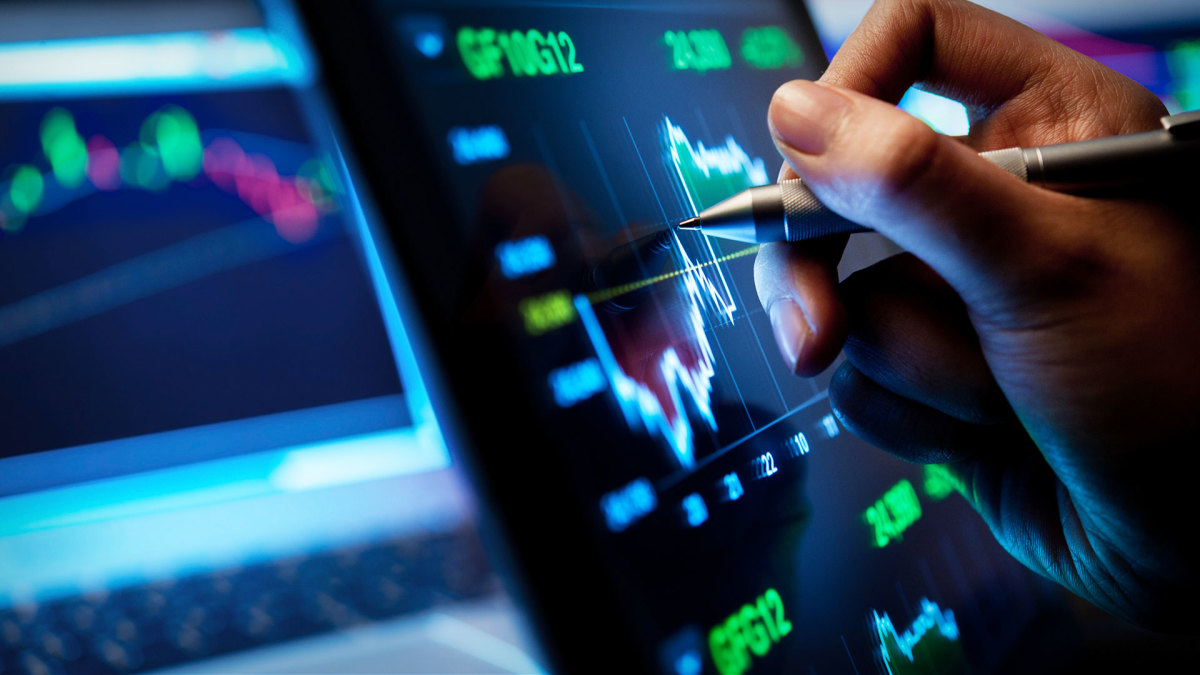
The stock market's summer swoon continued through October, surprising many investors who hoped stocks would find their footing by now. The S&P 500 dropped by 2% during October, bringing its losses since mid-July to nearly 10% – a decline big enough that Wall Street considers it a correction.
The decline didn't catch long-time analyst Bruce Kamich flat-footed. On Aug. 8, he warned investors to "sell calls, sell stock, buy puts, etc. This is not a drill" because Treasury yields were about to head higher.
Kamich's bearish prediction proved prescient. The 10-year Treasury note yield surged 1% from mid-July, touching 5% in October. Since that yield is used in equity valuation models, stocks took a beating.
Recently, Kamich shared a forecast on what could happen to stocks that may frustrate many investors.

Getty Images
Higher yields take a stiff toll on the stock market
The Federal Reserve's war on inflation caused it to increase the Fed Funds Rate by 5.25% since March 2022. Rates' historically rapid rise reined in economic activity as higher borrowing costs and more stringent lending requirements hamstrung corporate spending and consumer spending.
Related: Single Best Trade: Hedge fund manager Doug Kass gives his top pick now
Home sales decelerated, corporate projects were scuttled, and gross domestic product slipped, barely growing in the first half of 2023.
That was bad news for stocks because it meant slower revenue growth at a time when most companies were still struggling to offset their own rising costs due to inflation.
Nevertheless, much of that bad news was anticipated and priced into stocks during last year's bear market. As a result, stocks spent the first half of 2023 climbing. The S&P 500 rose by 20% through mid-July, a return that more than doubled what would typically be expected for an entire year.
Given the S&P 500's first-half returns, some giveback was to be expected. However, many likely questioned Kamich's warning in August. Those expecting a retreat likely weren't expecting a 10% drop and three consecutive down months. Something that hadn't happened since the second quarter of 2022.
The increase in rates is likely to blame. Short-term Treasury Bills have boasted yields above 5% that are in tune with the central bank's target for a while, but longer-dated Notes and Bonds had much lower rates until summer on hopes that inflation would fall quickly.
Those hopes were dashed this summer when energy and other commodity costs started climbing again. Instead of a fast descent toward the Fed's 2% inflation target, investors were forced to accept that sticky inflation could mean the Fed would make good on its promise to keep interest rates higher for longer, potentially sending the economy into a profit-busting recession.
The stock market gets oversold, but gains may be short-lived
The stock market typically performs much better in November and December, particularly following weakness in October.
However, Kamich, who has been using technical analysis to evaluate price and volume charts for 50 years, isn't convinced that strong seasonality will save the day this year.
More From Wall Street Analysts:
- Tesla analyst who told investors to ‘nail down profits’ in August has a new price target
- Analyst who predicted Nvidia’s rally has a new price target (many investors won’t be happy)
- Hedge Fund Manager Doug Kass correctly said to sell stocks in July; here’s what he’s doing now
In a recent post on Real Money Pro, Kamich explained that the advance/decline (AD) line of the S&P 500 is concerning.
" I can see that the S&P 500 Index has trended lower and so has the AD line. The lack of a divergence tells me that the downtrend is likely to continue," wrote Kamich. "Calls for a year-end rally will probably increase but I think they will be frustrated. The AD line has made a double top and is not far from breaking its October nadir."
The advance-decline line tracks advancing to declining stocks over time. It's a breadth measure that can indicate how healthy a market is by showing how many stocks are participating in a move up or down.
Kamich also notes that the S&P 500's inverse, or bearish, ETFs are suggesting the index itself continues lower.
"The instrument that I feel that will do the best in the fourth quarter is the Direxion Daily S&P 500 Bear 1X Shares SPDN," wrote Kamich. "I can see a dramatic increase in volume since the beginning of 2022. The weekly OBV line has climbed sharply. The MACD oscillator is close to an outright buy signal as it is about to cross above the zero line."
On-balance volume is essentially up minus down-day volume while moving average convergence divergence (MACD) is a momentum indicator based on short-term moving averages.
If Kamich is correct that the inverse and bearish Direxion S&P 500 ETF will likely gain ground, how far could the S&P 500 itself fall? Using a point-and-figure chart, he calculated a downside price target of 3,780, substantially below the 4,238 close on Nov. 1.
"Many stocks are extended (oversold), so we could see a short-term bounce to the upside, but this bounce, should it occur, will likely fail with prices soon resuming their decline," concluded Kamich.
Sign up for Real Money Pro to see what stocks Kamich thinks could be winners.







